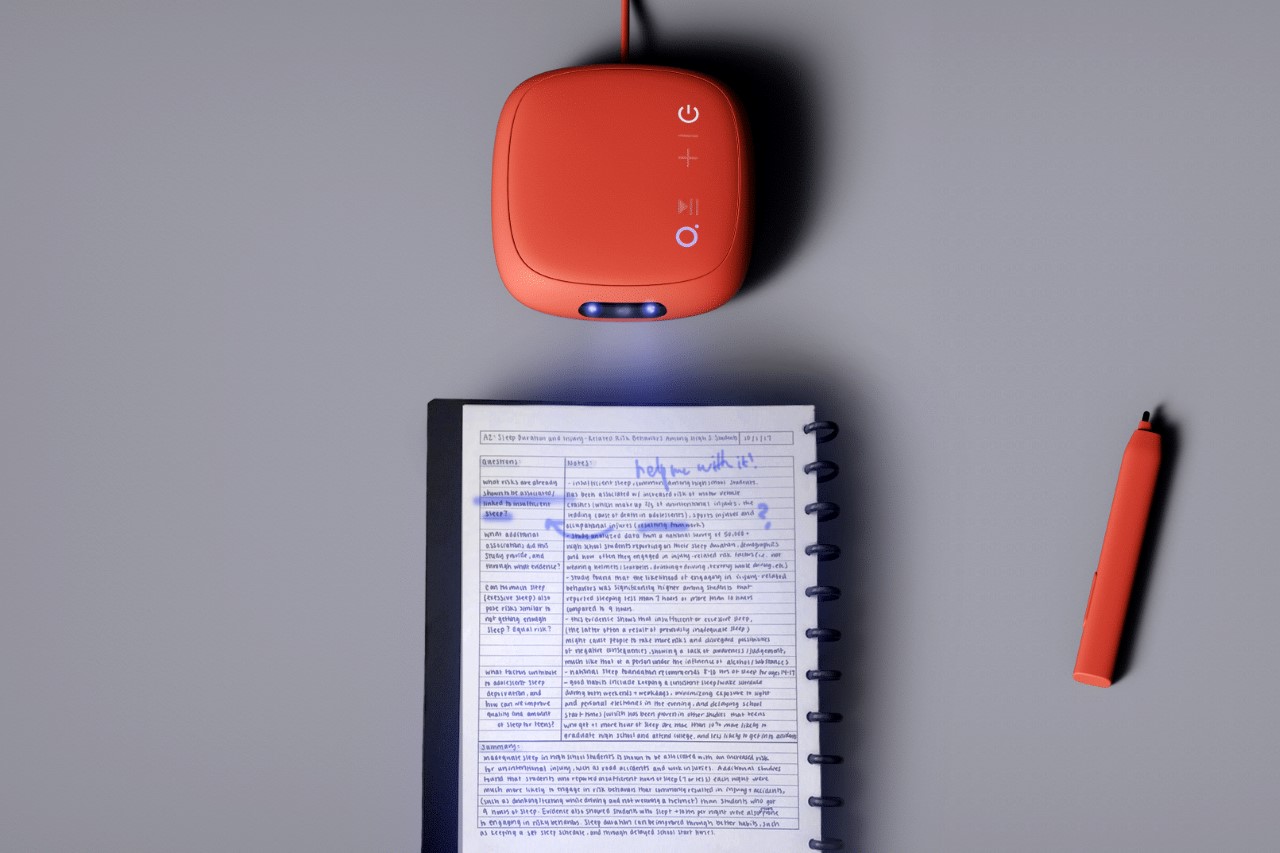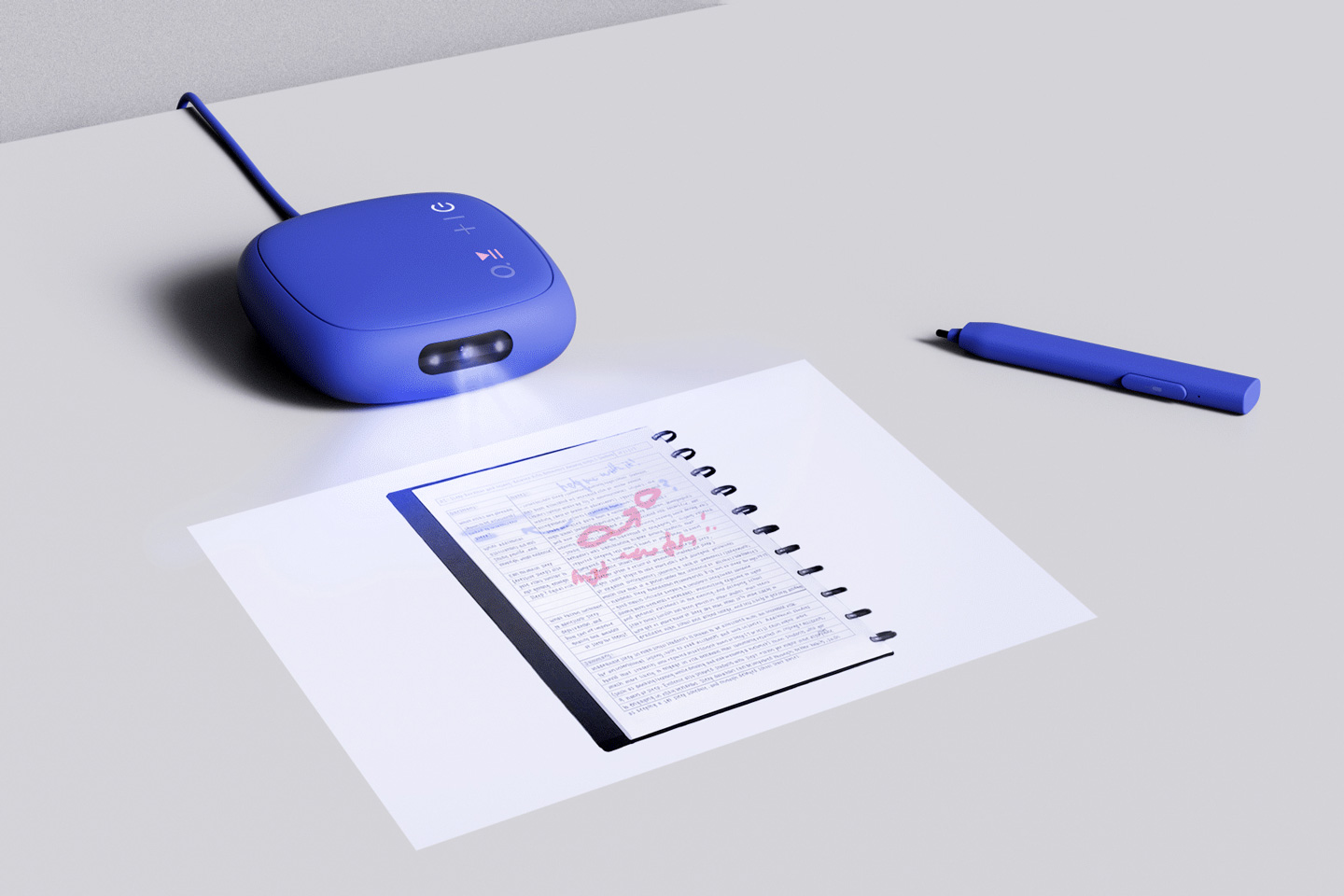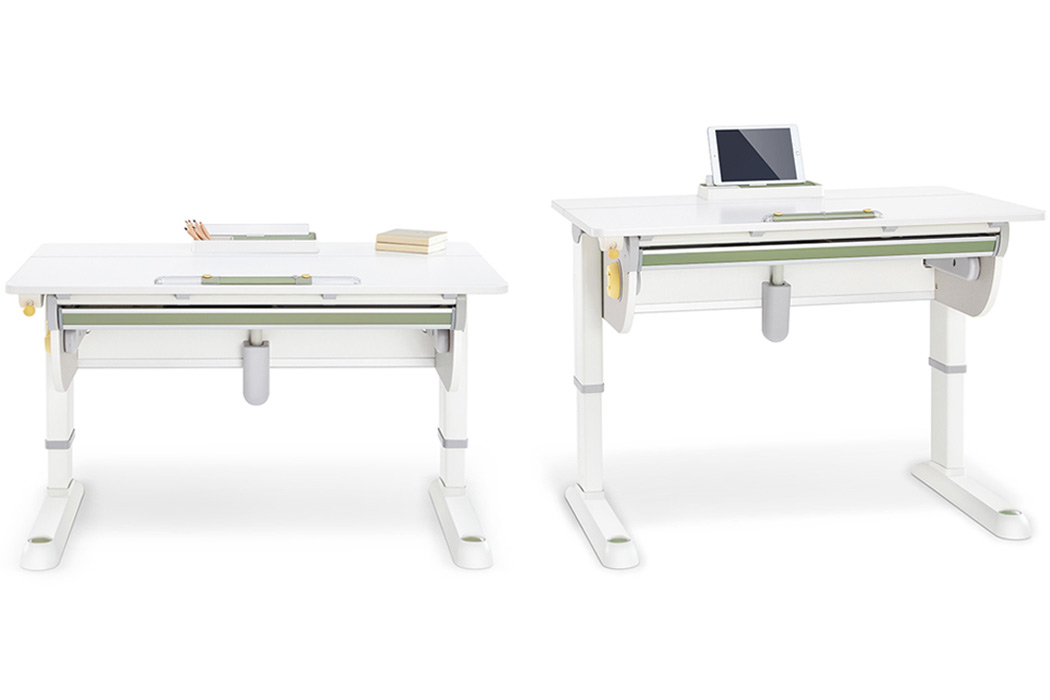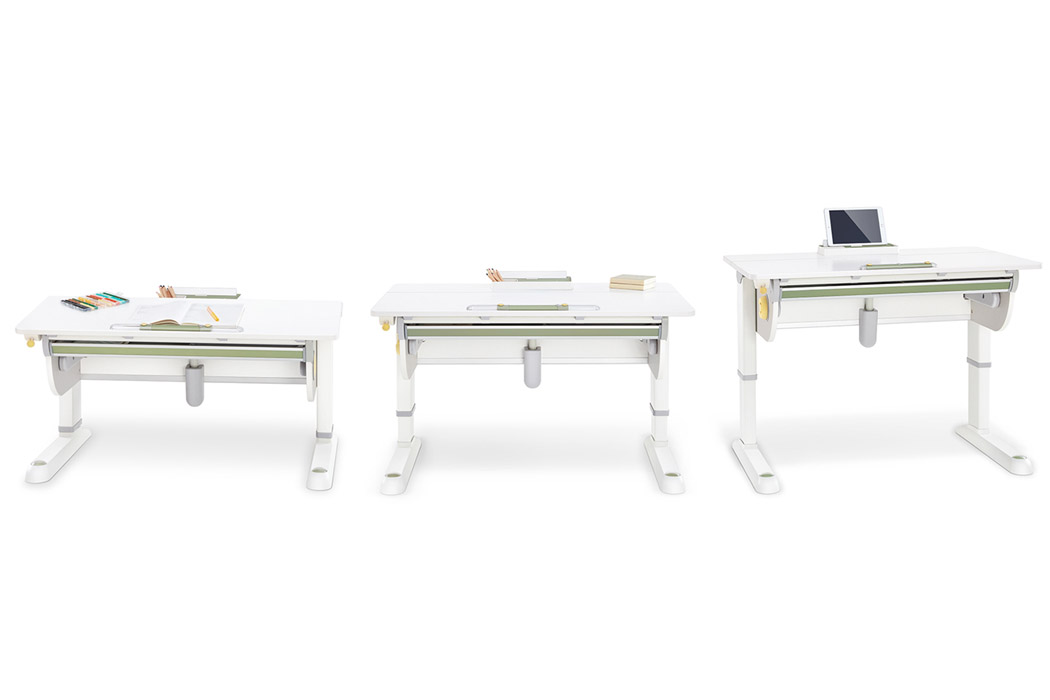
In a world dominated by online learning, the Moon projector offers a hybrid style of teaching, where teachers/mentors can project AR content over their students’ textbooks.
Designed to make learning from home just about as easy and rewarding as actually being around a teacher/tutor, the Moon projector lets teachers interact with students through augmented reality. The projector sits right in front of a textbook, overlaying virtual elements on top of the book’s printed text. Teachers can then interact with students THROUGH the Moon, underlining paragraphs, leaving notes, highlighting images, and even scoring papers in real-time.


The projector comes with a stylus that lets the mentor make digital annotations on the textbook (which then translates onto the textbooks of the students).

The entire experience is even powered by a smartphone app that lets mentor and mentee interact with each other, asking and answering questions, and tracking a mentee/student’s overall progress over time.


Designed to be used by kids in an educational setting, the Moon comes with a simple design and a bare-basics interface. The projector’s soft exterior helps it look friendly and approachable, while big buttons on its upper surface allow kids to control it without being jaded or intimidated.
The stylus, on the other hand, uses a touch-sensitive tip and underlying cameras to track its movement across the textbook. It even comes with a microphone button that allows the mentors to communicate directly with the mentees, sending them voice-note lectures during the online lesson. All in all, the Moon hopes to make the online tutoring/teaching experience frictionless, by offering a tech-enabled alternative to a blackboard/whiteboard and a human mentor/tutor sitting with you and explaining your lessons to you.
Designer: Soomin Son









 Verizon will provide free internet access to all students who need it in the Los Angeles Unified School District (LAUSD), the company announced today. This could help as many as 100,000 students continue to learn while schools are closed.
Verizon will provide free internet access to all students who need it in the Los Angeles Unified School District (LAUSD), the company announced today. This could help as many as 100,000 students continue to learn while schools are closed.




